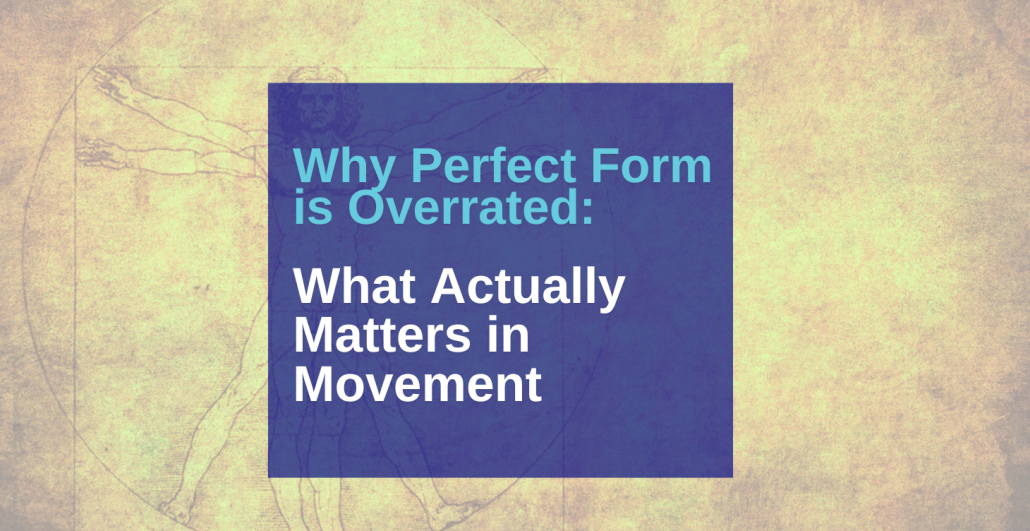Forget Perfect Form — What You Really Need is Movement Options
In the world of rehab, fitness, and pain recovery, the idea of “perfect form” gets thrown around a lot.
You’ve probably heard it:
“Keep your back perfectly straight.”
“Don’t let your knees go past your toes.”
“If your form isn’t perfect, you’re asking for injury.”
These rules sound reassuring—like if you just move a certain way, you’ll stay safe. But the truth is more complex, and more empowering.
Perfect Form Is a Myth
There is no universal “perfect” way to squat, hinge, press, or run. The human body is incredibly adaptable. No two people have the same anatomy, history, or preferences—and trying to force everyone into one standard template often creates more problems than it solves.
Movement isn’t about achieving some idealized look. It’s about what your body can tolerate, control, and repeat without distress.
But That Doesn’t Mean Anything Goes
Just because perfect form is a myth doesn’t mean all movement is good movement.
That’s where baseline movement qualities come in.
These are foundational abilities that support healthy, adaptable movement across a variety of tasks. They’re not about looking a certain way—they’re about giving your body the tools it needs to move freely and confidently.
So What Are Baseline Movement Qualities?
Here are a few examples:
-
Spinal control – You can flex, extend, and rotate your spine with control (not fear or compensation).
-
Load transfer – You can shift weight through your hips without overusing your low back or knees.
-
Breath control – You can breathe fluidly during movement and under stress, not brace out of fear.
-
Mobility + stability – You have enough joint mobility and muscular control to access a variety of positions safely.
These qualities create a resilient movement system. They give you options. And options are what keep people out of pain and in the game long-term.
A Better Analogy: Movement as Language
Think of movement like language.
You don’t need perfect grammar to speak fluently. But you do need a functional vocabulary and the ability to string thoughts together.
Likewise, you don’t need to move “perfectly.” But you do need some foundational capacity and awareness to express yourself physically, without fear or limitation.
Bottom Line
Chasing perfect form often leads to rigidity, fear, and frustration. But ignoring movement quality entirely can leave people unprepared and vulnerable.
The sweet spot?
✅ Ditch the idea of perfect.
✅ Focus on building capacity, control, and confidence.
✅ Move in ways that work for you—not just what looks good on paper.
When you do that, pain becomes less scary. Movement becomes more joyful. And your body becomes more adaptable and capable than you ever thought possible.




